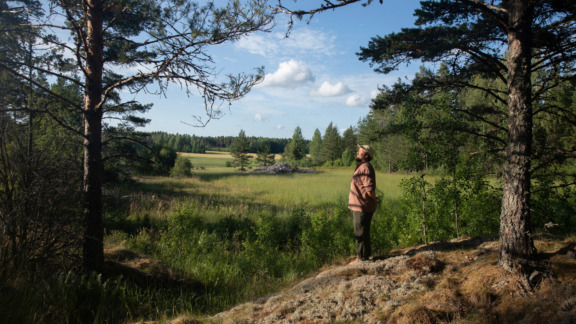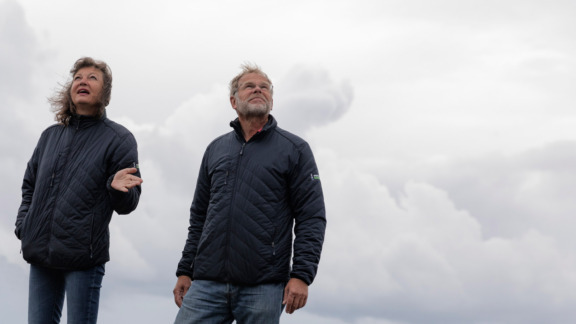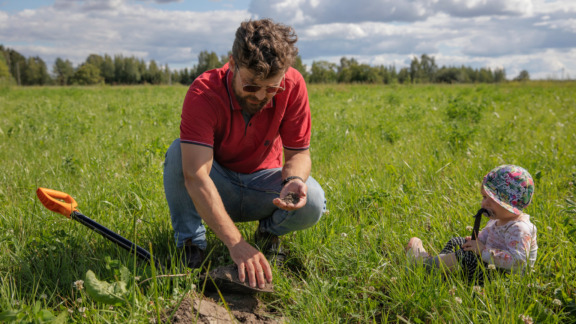“Rubber boots on, heading to the field at sunrise”
Researchers are searching for ways to improve carbon sequestration in agricultural lands and increase plant biodiversity on farmlands. Nature’s regulatory mechanisms should be integrated into food production, says Professor Anna-Liisa Laine, an expert in plant biodiversity.
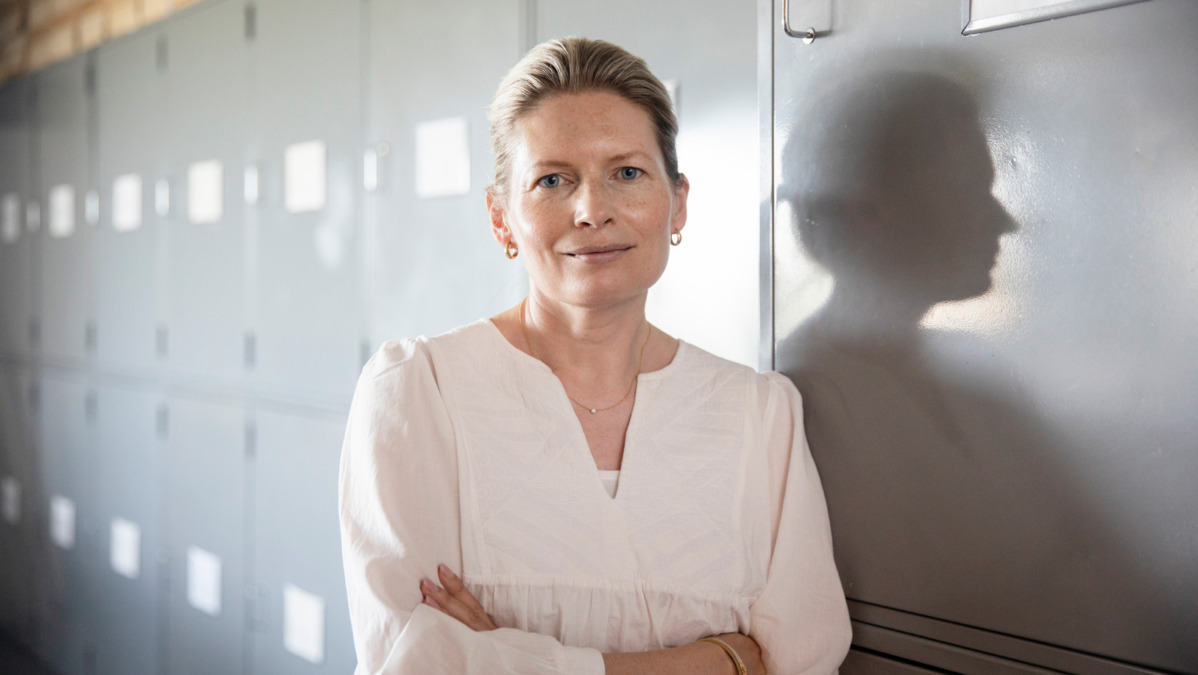
Text by Johannes Roviomaa
Photos by Miikka Pirinen
Life on our planet relies on the existence of photosynthetic plants. However, plant biodiversity is undergoing drastic changes as the climate warms and natural habitats shrink due to human actions.
“Plants are the foundation of all life, yet their impact on agriculture has been largely understudied,” says Professor Anna-Liisa Laine, 49.
Laine, trained as a plant ecologist, works as a professor of plant biodiversity and leads a research unit at the University of Helsinki. Her research focuses on plant populations and communities, as well as natural mechanisms that control plant diseases. She is especially interested in understanding how to keep the world green.
Laine’s latest venture in the field of ecology is researching the biodiversity impacts of agriculture, a topic that has received little attention in Finland.
Since 2019, Laine worked as a professor of ecology at the University of Zurich in Switzerland. She returned to Finland after securing a five-year grant of 2.5 million euros from the European Research Council in early 2023.
The project, The Coevolutionary Consequences of Biodiversity Change, explores the ecological and evolutionary effects of environmental change.
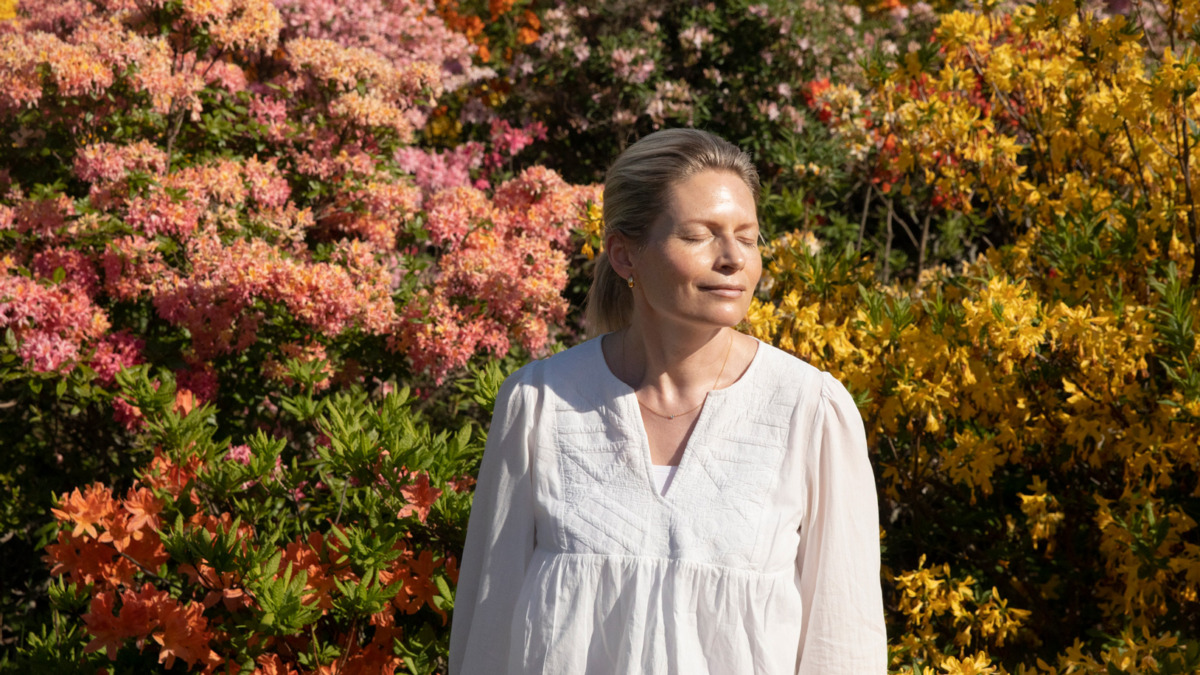
Laine has always been interested in how plants interact with harmful species, diseases, and herbivores. In ecology, it is understood that either predators or plant defense mechanisms regulate herbivore populations.
In nature, a constant battle is waged against both external and internal threats.
Anyone with a garden knows plant diseases can be hard to avoid when growing currants, roses, strawberries, or violets. Plant diseases are everywhere, Laine says.
“In research, I’m thrilled when we discover plant diseases, but in my own garden, it’s bittersweet.”
In agriculture, plant diseases can significantly impact food production.
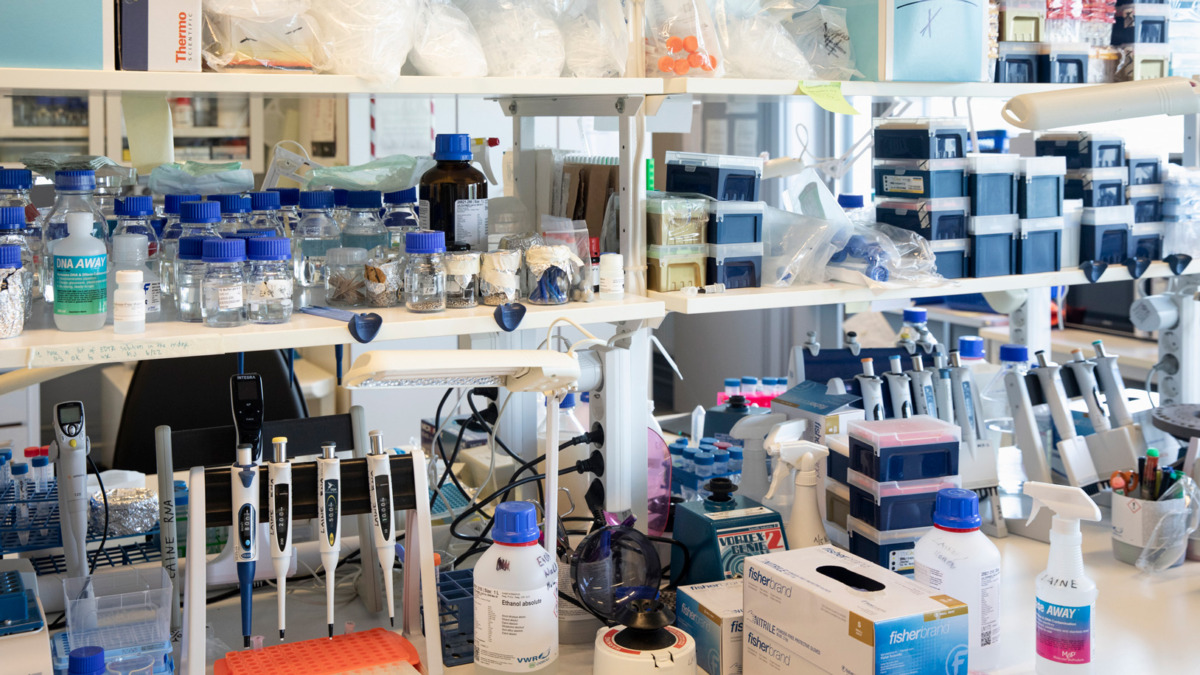
We visit the shared lab of plant biologists, which Laine worries is not as tidy as she’d like. Administrative duties consume much of her time, so she rarely visits the lab these days.
The refrigerators and freezers are full of samples. The tables are crowded with equipment: microscopes, pipettes, loupes, and jars.
“Don’t ask me what all this equipment is for,” she laughs, comparing herself to “an elephant in a porcelain shop” in the lab.
Laine’s team uses various modeling approaches, whether studying natural populations or agricultural biodiversity. They sequence microbes from samples and manipulate plants, for example by introducing pathogens to plants and observing development under a microscope, hoping to detect patterns.
“We take plant samples and map plant disease symptoms based on a specific sample. We isolate both beneficial and harmful microbes from plant leaves.”
Microbes are essential for nutrient acquisition. However, some microbes can weaken plant growth and increase mortality.
“Soil samples are analyzed for microbes, bacteria, and fungi in the root system. We study the growth and efficiency of microbial communities.”
In the lab, DNA is extracted from samples before analysis.
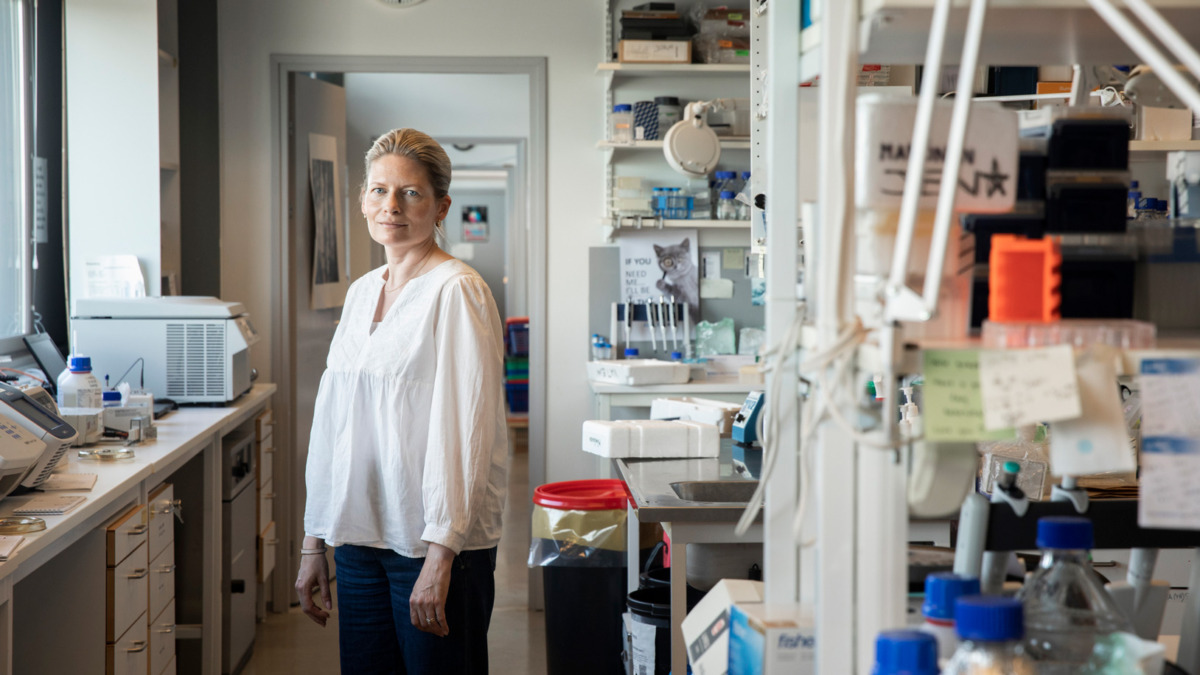
Global carbon stocks are depleting at a rapid pace. Fertile soil is lost to erosion. Erosion isn’t as pressing an issue in Finland as in many other regions. About 40 percent of the world’s land area is used for agriculture. Globally forests are still being cleared, and wetlands drained to make way for new farmlands and other human needs.
Although the situation in Finland is different, it’s important to focus on the carbon content of agricultural soil, as it affects both soil fertility and environmental benefits.
For the carbon stocks and biodiversity of agricultural soils, farmland management practices matter.
A sweaty afternoon continues outside, where the sun shines in a nearly cloudless sky. We walk to the fields of the Viikki Campus, located right behind the university building. These fields, divided by locked gates and barbed wire, have experienced several consecutive dry springs.
The Viikki area in Helsinki serves as Finland’s hub for sustainability sciences and natural research. Nearby, on the edge of the Viikki tiedepuisto, you can find the Natural Resources Institute Finland, the Finnish Environment Institute, the Forest Sciences Building, and the Finnish Food Authority.
“It’s rare, even internationally, to have a university and research fields so close together.”
However, in the future, the research fields will make way for residential buildings planned for the area. Laine is relieved that researchers will have access to these fields for another decade.
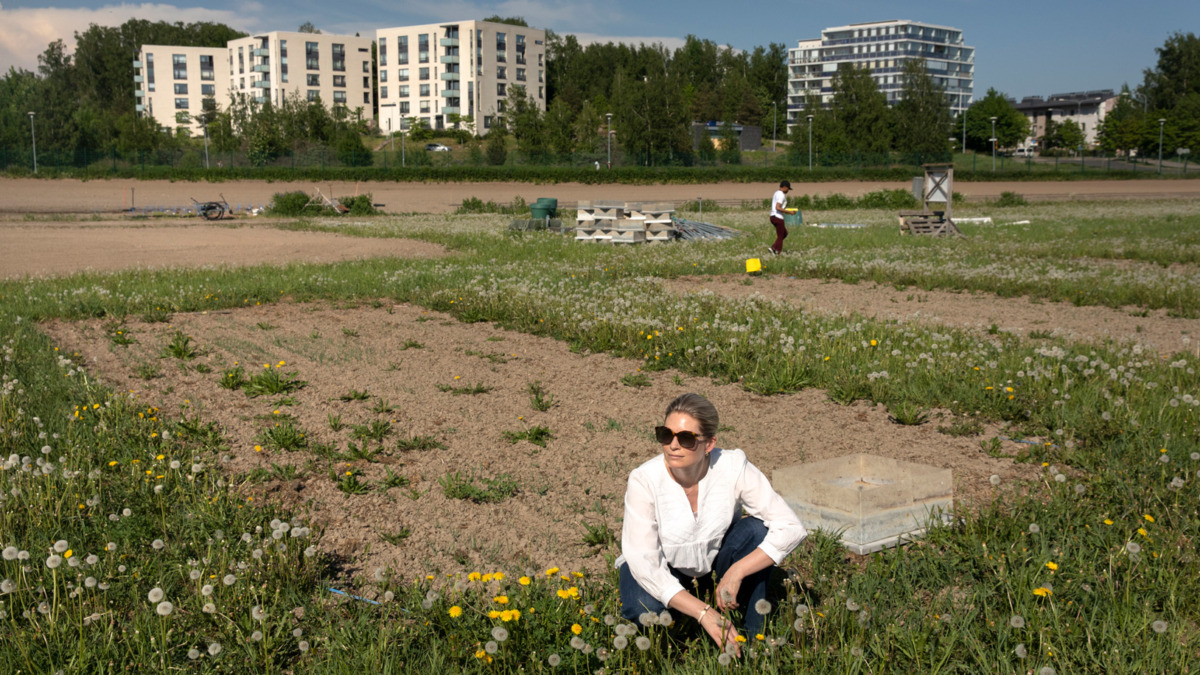
Currently at the Viikki’s research fields, oats are grown either alone or with two, four, or eight cover crops. In total, there are 64 field plots.
The research at Viikki’s fields aims to find ways for agriculture to mitigate climate change and combat biodiversity loss. The Baltic Sea’s biggest problem is eutrophication, which will not stop unless emissions are controlled.
The researchers’ goal is to gradually introduce more biodiversity into agriculture, which could also help stabilize crop yields, especially in case of extreme weather events. Less tillage, fertilizers, and pesticides. More cover crops, hydrological cycling, pollinators. These things would also improve the condition of the Baltic Sea.
“Food production environment is a highly simplified, man-made ecosystem. Our goal is to learn from nature’s regulatory mechanisms.”
Anna-Liisa Laine
Professor Laine is pleased that this subject is finally being studied in Finland. Before this project, she knew “only little” about agriculture. Now the parties involved – Finnish Meteorological Institute, University of Helsinki, Sitra, and Baltic Sea Action Group – are combining their expertise and knowledge in the Carbon Action platform. This regenerative farming initiative involves dozens of farmers across Finland.
“Even a small increase in carbon sequestration, by as little as one percent, in food production areas would be significant. Carbon Action’s idea is to create a model that can be replicated elsewhere.”
For instance, Finland has 2.27 million hectares of agricultural land. That is around 7 percent of the country’s total land area.
Oats were sown in spring, and the harvest will be collected in August, as is done on thousands of Finnish farms. In the backyard of the Viikki Campus, various farming practices are being replicated for experimental setups. No pesticides are used in these test plots.
Last year, barley was grown in these same research fields, which is particularly susceptible to net blotch. The disease reduces both crop quantity and quality. The research team explored, among other things, how climate change affects plant diseases.
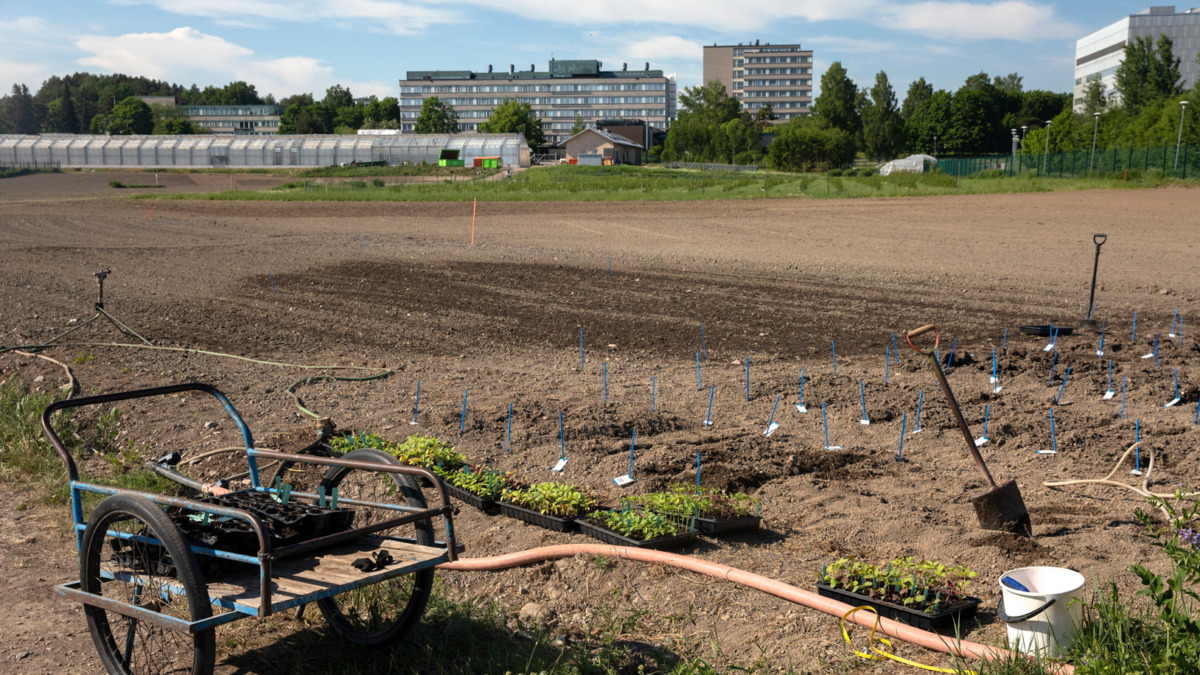
Laine says it remains a controversial question in biology whether climate change will reduce the nutritional value of food.
“For example, the effects of drought on plant nutrients are highly species-specific.”
Laine explains that the barley variety chosen for research fields is quite susceptible to diseases. For example, smut fungus can destroy an entire crop when it takes over.
Alongside barley grows deep-rooted species, for example clovers. Researchers are studying the characteristics of these “pair combos.”
The purpose of this biodiversity research is to enhance plant architecture and chemistry to create better living conditions for underground microbes. This allows microbes to utilize carbon more effectively and increase biomass production, leading to improved carbon storage in the soil.
Laine explains that the farming philosophies of the farmers participating in the Carbon Action research vary from farm to farm. Some focus more on the diversity of the crops they grow than others. Laine is cautious about drawing far-reaching conclusions from the results of biodiversity studies just yet.
Conducting this research is challenging due to differences in land use history between farms. The farms also cultivate different plant species in different ways. Soil and climate conditions vary as well.
“Identifying statistically different signals is annoyingly difficult,” Laine says.
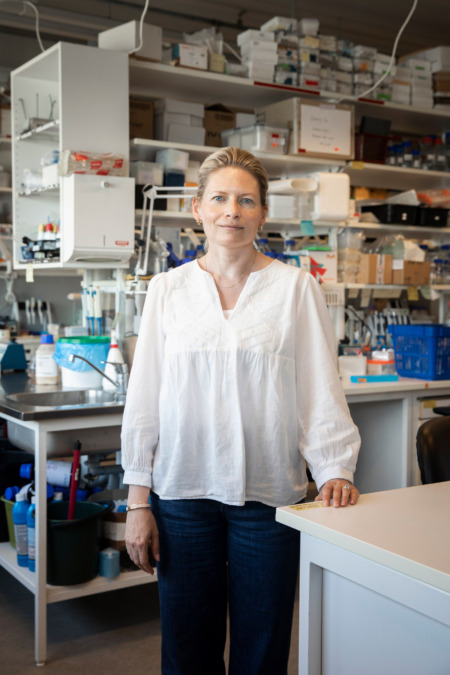
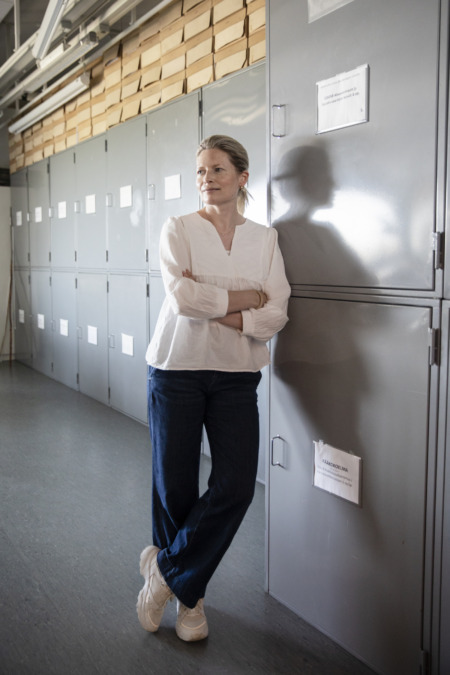
However, some findings from the test field studies can already be shared.
Soil’s microbial communities respond to plant diversity: the greater the diversity, the more growth and carbon utilization increases. These are some of the key findings from the fields, says Laine.
The test fields at Viikki Campus have shown that the number of cover crops, whether one, two, four, or eight, has little impact on disease pressure in barley. Barley was monitored for three years.
“Few farmers would be enthusiastic about eight species competing for space, nutrients, and light in the same soil. It’s a positive and encouraging finding.”
“Individual species growing alongside barley can significantly reduce plant diseases, which is good news,” says Laine.
Anna-Liisa Laine
Barley can contract net blotch from seeds, which can be an irritating and troublesome disease.
The researchers have also conducted bird surveys during farm visits by listening to bird songs and recording their observations.
“Rubber boots on, heading to the field at sunrise. On some farms, farmers even offered us morning coffee after the bird survey.”
On Viikki’s research fields, we pass a weather station maintained by the Finnish Meteorological Institute. We see a small, portable chamber used for gas measurements and studying plant photosynthesis.
On the neighboring field, a drought experiment is underway, led by Mari Pihlajaniemi. The team is examining plant samples to see how the soil organisms respond to drought.
The test plots are covered with rain shields that prevent water from entering the soil. Water runs along the troughs into green barrels, where the amount of rainwater is measured. Similar research setups can be found elsewhere in Europe as the drought tests are part of an EU-funded project.
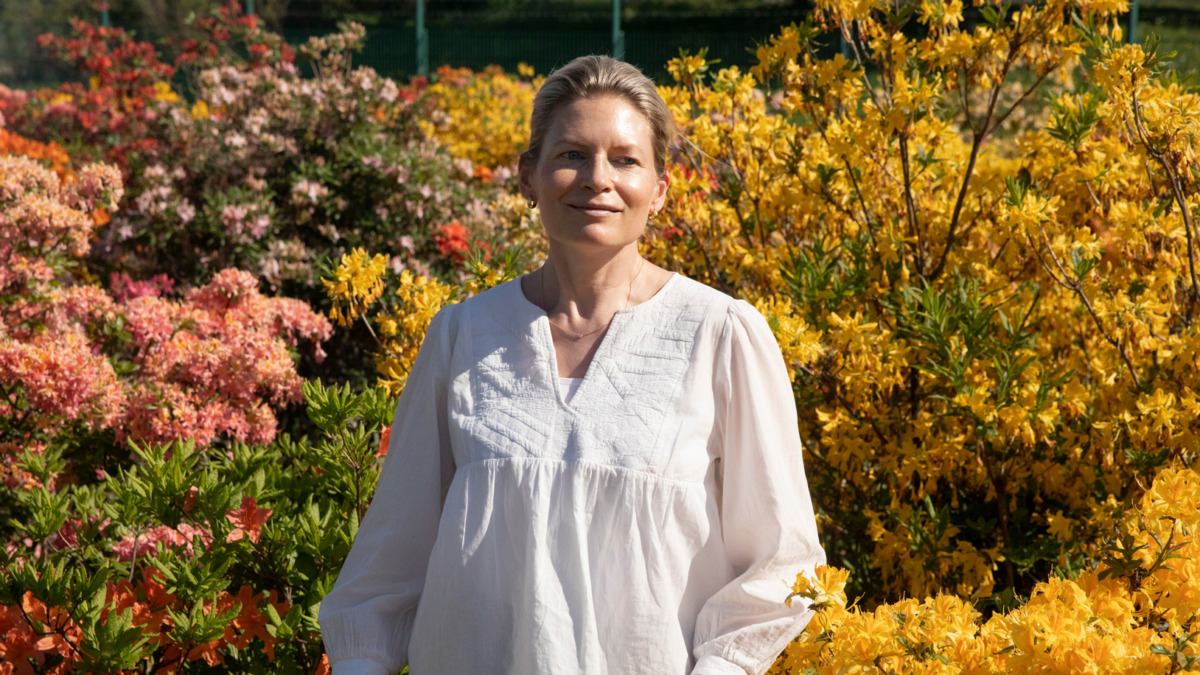
Laine describes herself as a “science purist.” She wants to conduct science as freely as possible.
“I don’t want to evaluate science and research based on whether they are useful or not. My work is driven by pure curiosity, which is the core of all knowledge and civilization.”
Laine wishes we lived in a society where actions are based on research. The perennial challenge is how to translate knowledge into practical applications.
“We risk losing major discoveries if the work driven by a researcher’s curiosity is restricted.”
Science doesn’t happen in a vacuum. Throughout her career, Professor Anna-Liisa Laine has had many sources of inspiration. The first was her high school biology teacher, whose enthusiasm inspired Laine to apply to university to study biology.
Her studies went well. Now she leads a research unit with multimillion-euro funding.
Laine’s PhD supervisor was the world-renowned ecologist, academician, and professor Ilkka Hanski (1953–2016). Hanski is known, among other things, as the developer of metapopulation theory.
“I was given space to grow as a researcher, as my dissertation topic was quite far from Ilkka’s research. His way of building research communities and thinking about science was inspiring.”
At that time, Laine became interested in a relatively unexplored area: plant diseases in nature.
After her dissertation, Laine worked as a postdoctoral researcher in California, where she studied butterflies with Professor John Thompson. “The butterflies were active from ten in the morning to three in the afternoon. After work, we went to taste wines at nearby wineries.”
In Australia, she studied flax rust with plant disease researchers Peter Thrall and Jeremy Burdon at the CSIRO.
Laine says her most important colleagues come from France, which she considers a leader in plant disease research. Perhaps that is also why there are several French researchers in Laine’s research teams.
In nature, all living beings compete for energy, light, nutrients, and space – whether they are microbes, pines, roses, bees, or humans.
Researchers from the University of Helsinki have been monitoring thousands of ribwort plantain meadows and the powdery mildew that infects them in Åland for a quarter of a century. According to Laine, in the past decade, the populations have been either very strong or very weak.
Studies show that plant populations growing close to each other are healthier than those growing apart. The reason lies in disease-resistance genes that can transfer between populations at close range.
The effects of climate change on plant diseases are surprising. The winter season, when seemingly nothing happens, can be crucial for crop yields.
In Åland the occurrence of powdery mildew has been studied in relation to snow cover, as it overwinters in dead leaves. Powdery mildew is a stress factor for ribwort plantain, as it absorbs nutrients and sugars.
“The longer snow stays on the ground, the better the season is for powdery mildew. Drought combined with powdery mildew can be a disastrous combination.”
Laine believes ribwort plantain is an ideal test plant because its seeds have a high viability, can survive a long time in petri dishes, and its root system is easy to clone. It also grows quickly and blooms in the first year.
However, there is a downside. Laine is highly allergic to ribwort plantain pollen due to prolonged exposure. She mentions that occupational diseases are common in ecological research circles, where researchers can become allergic to the species they study.
“Humans are not meant to spend hundreds of hours surrounded by just one species.”
In the Protectors of the Baltic Sea article series, we dive beneath the surface, visit the largest marine conservation area in the Archipelago Sea, take a ride on a farmer’s tractor, travel on a cargo ship, and talk to an artist and an entrepreneur.
Johannes Roviomaa is a journalist, screenwriter, and visiting researcher at the Arctic Centre. In 2024 he was named Freelance Journalist of the Year. Currently, Roviomaa is working on a book about the future of Finnish food production with journalist Hanna Nikkanen, Mikko Pelttari, and photographer Touko Hujanen.
Miikka Pirinen (1985) is a documentary photographer working with both Finnish and international clients. He has been awarded six times in the Vuoden lehtikuvat competition. Pirinen has documented workers in the fossil mining industry as part of the nonfiction book Likainen työ (Like 2023), which explores the just transition.
